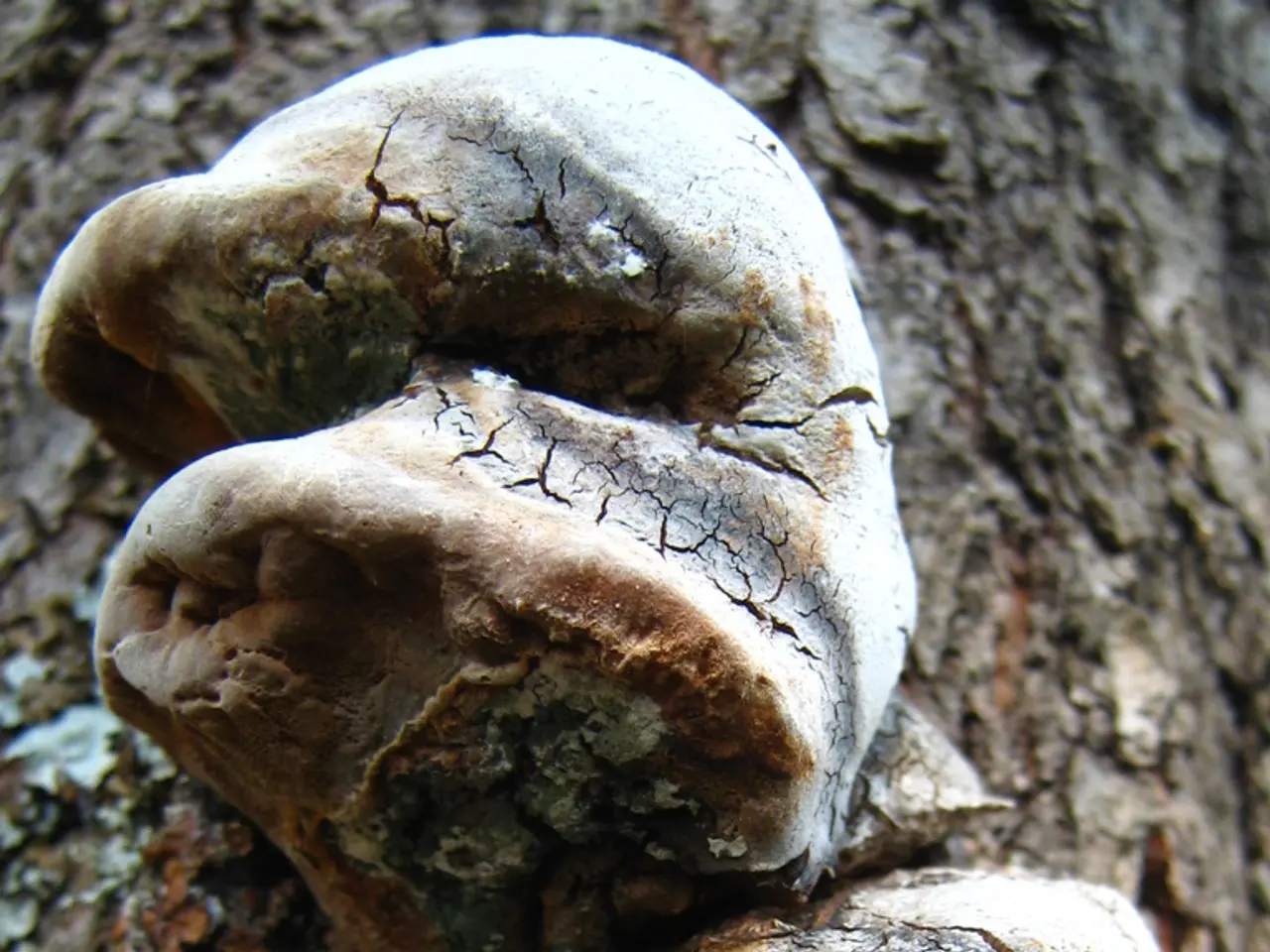Apple affected by Black Rot and Frogeye Leaf Spot disease outbreaks
In the world of apple and crabapple tree cultivation, two common diseases pose significant challenges: black rot and frogeye leaf spot. These diseases are caused by the fungus Botryosphaeria obtusa and can lead to fruit rot before harvest, defoliation, blighting, and dieback of twigs and limbs.
To combat these diseases, a combination of cultural practices and chemical control measures is recommended.
Cultural Control Measures
Early in the season, pruning out infected twigs and branches is crucial to reduce the inoculum for both diseases. Removing and destroying infected fruit, or "mummies," also helps to reduce overwintering inoculum for black rot. Avoiding unnecessary fruit injury that could create entry points for infection is equally important.
Chemical Control Measures
For black rot, captan is recommended if applied early and repeatedly throughout the growing season. Other effective fungicides include Merivon (a group 7 + 11 fungicide) and Folpan, with application timing important to avoid fruit russeting and adhering to label restrictions on reapplication frequency.
For frogeye leaf spot, fungicides such as myclobutanil, copper fungicides, or sulfur products are effective. However, careful adherence to label directions is necessary due to potential phytotoxicity.
High-Risk Periods
Combining sanitation and pruning (cultural control) with targeted fungicide applications during the high-risk infection periods—particularly from petal fall and several weeks thereafter—is the best strategy to manage black rot and frogeye leaf spot on apple and crabapple trees.
Understanding the Disease
Fruit infection can occur as early as petal fall; however, symptoms are usually not visible until mid- to late-summer as the apple approaches maturity. In the spring, the black fungal fruiting bodies (pycnidia and perithecia) release conidia and ascospores, respectively. Spore germination and infection are most rapid at 75 to 80 degrees F.
Infected fruit develop brown and black concentric bands or rings, and finally turn black and shrivel into a wrinkled black "mummy." The fungus overwinters in cankers, mummified fruits, and the bark of dead wood. Black pycnidia may develop on the upper surface in the centers of the older leaf spots.
Small, purple specks appear on infected leaves, enlarging to form spots with a light brown-to-gray center, dark-brown concentric rings, and a purple margin. Black rot can result in losses due to fruit rotting, defoliation, blighting, and dieback of twigs and limbs, and premature dropping of infected leaves.
In cold storage, the flesh of black rot-infected fruits remains firm. Black, pimple-like fruiting bodies (pycnidia) of the causal fungus appear on the surface of rotted fruit. The disease usually starts at the calyx end of the fruit and enters through wounds caused by insects, hail, growth cracks, or an open calyx tube.
Sanitation is critical for effective control of black rot, including removal of mummified apples, pruning out dead wood, and pruning out current-season shoots infected with fire blight. The disease is also known as frogeye leaf spot on the leaves. Conidia become attached to the leaf and may germinate in a film of moisture within five or six hours.
In summary, by understanding the life cycle of these diseases and implementing effective control measures, apple and crabapple growers can protect their trees and ensure a bountiful harvest. Always follow specific fungicide label instructions and consider alternating chemical classes to reduce resistance risk.
Maintaining good lifestyle habits in gardening and home-and-garden activities, such as pruning infected twigs and branches early in the season, removing infected fruit, and minimizing fruit injury, are crucial cultural control measures to combat black rot and frogeye leaf spot in apple and crabapple trees. When high-risk periods arise, especially from petal fall and several weeks thereafter, a combination of sanitation and pruning (cultural control) along with targeted fungicide applications, such as captan for black rot, myclobutanil, copper fungicides, or sulfur products for frogeye leaf spot, is the best strategy to effectively manage these diseases.




